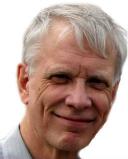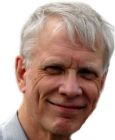Identity
We Are Our Beliefs
Belief is essential to our sense of identity. It is also inherently vulnerable.
Posted February 14, 2018
Bertrand Russell observed that “believing is the most mental thing we do.” Indeed, our beliefs define the world for us, and as I have written elsewhere (in Belief):
Our thoughts and feelings, our actions and reactions, respond not to the world as it actually is—for we never know reality directly—but to the world as we believe it to be. Because of our beliefs, we brush our teeth or don’t bother; we vote for Jennifer and not for John; we eat certain foods and avoid others; we worship one deity or another or none at all, and we rely on scientific medicine or homeopathy to cure our ills.
Even more important, our beliefs tell us who we are. They mark our place in the social world and provide a personal, autobiographical history that anchors us to various places and situations and events across our lifetimes. As a result, you may believe that you are a male university student who grew up in Brooklyn, a female college teacher from Manchester, or a transgender newspaper reporter from Rio de Janeiro. And you may believe that those people you visit on Sundays are your biological parents and that the picture on their wall is of you, taken at a birthday party when you were 10 years old. You may believe that you are the same person who broke an arm after falling off a bicycle at age five, who played the Music Man in a high school play, who dated Martha for three years, and who now sits reading this blog. We generally take for granted that such beliefs are accurate, but when there is clear evidence that they are not, we may label them delusional. And when such beliefs wither away with the onset of dementia, people gradually lose knowledge not only of the world around them but even of themselves. They no longer know who they are.
While we generally trust our beliefs and they usually serve us well, they can be very vulnerable to error and distortion. To understand why this is so, it is important to examine how they form in the first place and how they can shift over time.
Our brains, of course, have no direct contact with the outside world, and our only information about what is going on outside comes to us from the wonderful array of sensors—eyes, ears, taste buds and so on—that developed when our bodies were taking shape in utero. These sensors collect data from the outside world and deliver it to non-conscious processes in the brain where it is processed and largely interpreted before being fed to our consciousness. By the time we are aware of it, the “data” have already undergone considerable modification. For example, we see colors, but color does not exist outside our brains. It is only a subjective phenomenon. Similarly for sound: Our brains construct the subjective experience of sound in response to the waves of molecules that strike our eardrums.
And of course, we all know that our eyes can fool us at times. As an example of this, consider this picture that I took last summer in a public square in Cascais, Portugal. It is a wonderful example of a trompe l’oeil (“fool the eye”). Whether viewing the scene in person or through the photograph, it seems difficult to believe that the surface before you is actually perfectly flat:

However, when the same scene is viewed from a perspective rotated by 90 degrees, the flatness is obvious:

Yet, even knowing that the surface is flat, it is hard to dispel lingering doubts about it when you view it from that first angle.
While we may such illusions as entertaining, they also provide an important message: Our perceptions of the world can be very misleading at times and can result in beliefs that are wildly inaccurate. It is not only perception that can lead to false beliefs. Errors of memory and the vicissitudes of learning and emotion can also distort what we become to believe. The various processes that feed into our beliefs constitute what I like to refer to as a Belief Engine (in homage to Charles Babbage’s 19th-century conception of his analytical engine which foreshadowed the modern computer).
Again, as I note in Belief,
The Belief Engine chugs away in the background, taking in information from the world outside, scrutinizing its source, checking its compatibility with existing beliefs, subjecting it at times to logical analysis, and then effortlessly generating new beliefs and maintaining or modifying old ones. Most often, this occurs without the awareness of the “operator”—you or me. And, like a computer, our Belief-Engine brains comprise both hardware and software. We come into this world equipped with the basic hardware, although it continues to develop further over a number of years after birth. The “software,” the programming, comes through interaction with our environment (parents, teachers, siblings, friends, the media, and the experiences of everyday life) and through the development of the thinking skills that we acquire as we grow up.
It is my intention to use this blog to explore how our beliefs are shaped by the Belief Engine and to examine our vulnerabilities to developing false beliefs that are held with great confidence and are shielded from disconfirming information.
References
Russell, B. (1921). Analysis of Mind. London: Allen & Unwin. (P. 231).


